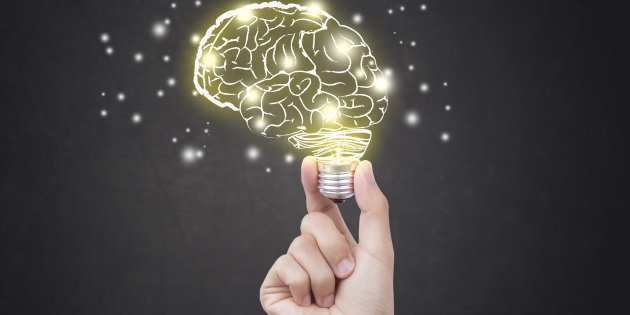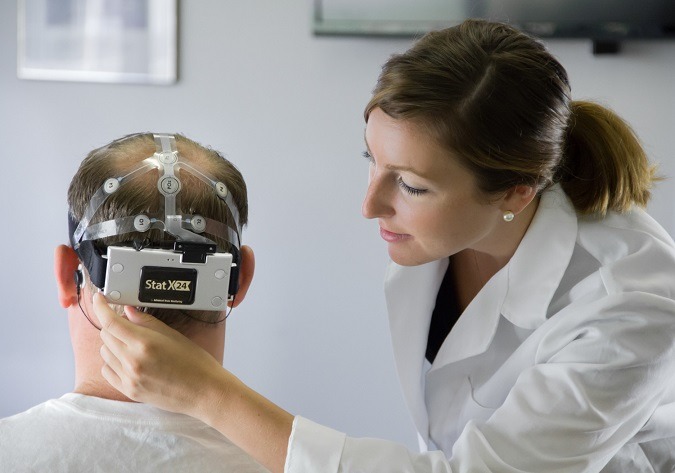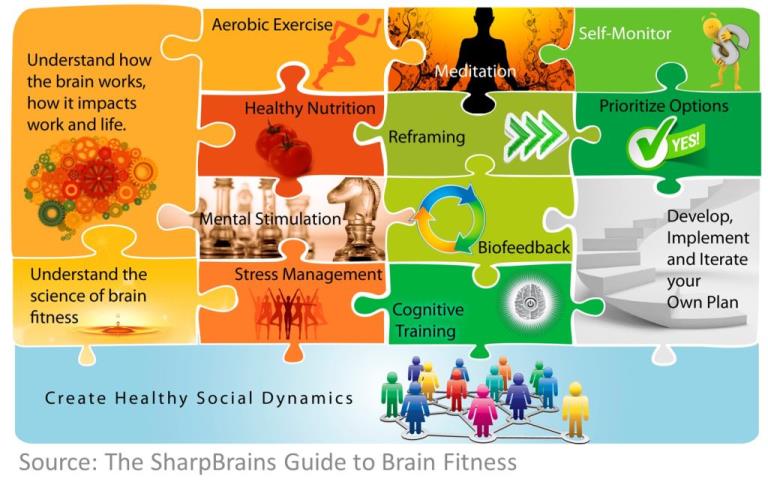Four reasons the future of brain health is digital, pervasive and bright
 —
—
Hundreds of companies and science labs around the globe are researching the inner workings of the human brain and mind, and developing new ways to help brain owners be smarter, sharper, and healthier for longer.
What explains this flurry of activity?
To answer that question, let us highlight four key drivers discussed in depth at the 2016 SharpBrains Virtual Summit, held last December, when over 200 participants in 16 countries met to discuss the greatest and latest about neurotechnologies that, being digital, are scalable and relatively inexpensive, and that, being non-invasive, pose few if any negative side-effects.
1. Significant and growing unmet needs make the field ripe for a revolution
Consider all unmet needs.
Cognitive disabilities in children are growing significantly, from ADHD and OCD, to autism. Autism Spectrum Disorders are prevalent in about 1 in 60 children and the related emotional and economic burden is substantial — yet, over 60–70% of those with treatment have poor outcomes.
 Work at UT-Dallas BrainHealth Institute, for example, can help increase frontal lobe connectivity, which is significant since the frontal lobes support complex problem solving, novel thinking, emotional intelligence, judgement & decision making, agility & flexibility and strategic leadership – the top skills to suceed in the Fourth Industrial Revolution described by the World Economic Forum.
Work at UT-Dallas BrainHealth Institute, for example, can help increase frontal lobe connectivity, which is significant since the frontal lobes support complex problem solving, novel thinking, emotional intelligence, judgement & decision making, agility & flexibility and strategic leadership – the top skills to suceed in the Fourth Industrial Revolution described by the World Economic Forum.
Depression is a common mental disorder – globally, estimated 350 million people of all ages suffer from it. And substance abuse disorders are a national crisis in the US–around 21 million Americans have a substance use disorder–and despite significant funding for prevention, and treatment the relapse rate is over 80%.
Cognitive impairments due to PTSD, traumatic or acquired brain injury, and concussions, pervade through millions of veterans and practitioners of high-contact sports. Yet diagnosis and treatments are often elusive, as systematic monitoring and brain scans are not as extensively used as they should.
Aging-related cognitive decline: According to estimates by Baycrest in Canada, delaying the onset of dementia by two years alone would lead to savings of over $200 billion.
In short: for one reason or another, 7.5 billion human brains need better access to better and cheaper brain health and mental health solutions.
2. The coming of age of mobile, sensing, wearable technologies opens scalable opportunities
At the same time, we are witnessing the coming of age of a very promising pervasive neurotech toolkit. Our better understanding of neuroscience, along with digital technologies, has started to offer a range of digital brain health solutions, as mobile, sensing, wearable, digital technologies and artificial intelligence can enable continuous brain and mind monitoring, personalized and quick diagnoses and treatments, task-specific neurofeedback, and complement traditional treatment modalities such as pharmacological interventions.
For example:
- Better meditation and mindfulness practice via apps, EEG bio-sensory feedback
- Personalized medicine and adherence via gamification and artificial intelligence (AI)
- Sensorimotor and physiological improvements via EEG, Virtual Reality
- Non-invasive Cognitive enhancement through targeted exercises adaptive in real-time, enabling better learning and absorption
 —
—
Innovation is enabled by the core fact—called neuroplasticity–that the human brain continually changes itself through experience. What follows from this fact is that through targeted ways to activate specific circuits of the brain (through mental exercises, meditation and neurostimulation), we could learn faster, better and become mentally stronger. You may have heard of firms offering relevant “mental training” solutions in the consumer space, such as Headspace (mindfulness) and Lumosity (cognitive training), but that’s only the tip of the iceberg.
Many pioneers are working on ways to “harness neuroplasticity for good” via cognitive assessments and therapies (BrainHQ, CogniFit, Akili, Pear Therapeutics, MyndYou, Click Therapeutics, Cogniciti, SBT Group) mindfulness apps (Claritas Mindsciences), EEG (Emotiv, Interaxon’s Muse) virtual reality (MindMaze), and more.
Mindfulness is another area with growing interest and activity. Claritas Mindsciences, for example, is working to better manage addictions (such as smoking and binge eating) via mindfulness training — preliminary findings show that the brain is able to disassociate the connection between craving and addictive behavior.
Education giant Pearson has been buying and licensing digital assessments and cognitive therapeutics intervention tools such as Cogmed and RehaCom, while the Educational Testing Service (ETS), is using Big Bata and machine learning to better identify at-risk learners and help with timely, targeted and effective interventions– for example, collaborations with IBM Watson and others can leverage fast feedback loops & machine learning to target personalized and individual tutoring.
3. Private and public funding is growing rapidly, given expected social and financial returns
With both private and public investments backing research-based entrepreneurship in the digital brain health space, the future does look sharper and healthier.
 Merck Ventures–an evergreen $300m digital health fund backed by Merck—is seeking to work towards improving patient outcomes targeting investments in digital and platform technologies that enable Assessment, Intervention and Treatment, and has five investments in neurology-related companies, including a sizable one in Akili Interactive Labs—which is building a platform with the emphasis on cognitive therapeutics through gamification. Their vision is to have FDA-approved monitoring and treatment environments that certify the validity of efficacy against mental health issues such as ADHD, Autism Spectrum Disorders, Sensory processing, depression, Alzheimers, dementia, Parkinson’s disease.
Merck Ventures–an evergreen $300m digital health fund backed by Merck—is seeking to work towards improving patient outcomes targeting investments in digital and platform technologies that enable Assessment, Intervention and Treatment, and has five investments in neurology-related companies, including a sizable one in Akili Interactive Labs—which is building a platform with the emphasis on cognitive therapeutics through gamification. Their vision is to have FDA-approved monitoring and treatment environments that certify the validity of efficacy against mental health issues such as ADHD, Autism Spectrum Disorders, Sensory processing, depression, Alzheimers, dementia, Parkinson’s disease.
Similarly, Pear Therapeutics is developing app-based monitoring and gamification to tackle challenges such as substance abuse disorder, PTSD, anxiety, Insomnia, traumatic injury, and ADHD, in partnership with various labs and pharma companies, with the intention to reduce costs and ensure a higher patient retention. Pear is backed by Jazz Ventures and its products are in the process of securing regulatory approval.
Another exciting start-up, MindMaze, raised US$100M in 2016. MindMaze is working on using virtual reality (VR), augmented reality (AR), computer graphics, brain imaging & neuroscience to treat patients with patients with brain injuries, stroke victims, spinal cord injury and amputee patients who may have lost cognitive control of their limbs – and a couple of company representatives shared a fascinating update of their current and future solutions in this domain.
There is also growing investments from public sources, especially in the US and Canada.
The National Institute of Mental Health (NIMH) runs the Small Business Innovation Research Program (SBIR) and Small Business Technology Transfer Research Program (STTR), two funding programs for start-ups helping commercialize research findings and platforms. Interestingly, the majority of funding since 2005 has been aimed at supporting IT-related initiatives: out of the portfolio of US$325m and 528 investments, 46% are in IT, 20% in Drug development, 12% in Research Tools, 8% in Software for data analysis and sharing.
Up north, Baycrest recently secured five year funding of $124m from the Governments of Canada and Ontario, industry and various donors to build the new Canadian Centre for Aging & Brain Health Innovation (CC-ABHI), with a mission to accelerate, innovate and drive adoption of proven brain health products, such as web-based cognitive assessment Cogniciti.
4. Professional bodies are joining the fray
There’s also clear and growing interest by front-line practitioners who realize the limits of our current brain health and mental health approaches and want to help harness the digital therapeutics toolkit in appropriate ways. For example, the American Academy of Clinical Neuropsychology (AACN) announced at the 2016 virtual Summit a new Disruptive Technology Initiative to accelerate the development of “assessments and/or intervention-prevention-improvement of cognitive functions, accessible to the entire population.”
Professional guidance is going to be important. When you see all the apps for (a) mindfulness, such as Headspace, Happify, (b) cognitive training like Lumosity, Peak, CogniFit, © medical, FDA-grade treatments such as Akili Interactive Labs, Pear Therapeutics and (d) EEG wearables such as Muse and Emotiv, you may be thinking, this is great, but how will consumers know what to use and what not to, and how and when?
Many of the Coaches and Psychologists of the Future–represented in the SharpBrains Summit by the Institute of Coaching, The Synapse System, the new Watson Centre for Brain Health, among others–are expanding their practices with latest brain & cognition findings and digital neurotechnologies, and helping end users navigate and integrate the growing range of options — For example, the framework below, from The SharpBrains Guide to Brain Fitness, shows how to put together the different parts of the brain health puzzle, and how to use technology to augment (not to replace) our lifestyles.
 We hope this article gives you a useful and hopeful glimpse of the future of brain health.
We hope this article gives you a useful and hopeful glimpse of the future of brain health.
Exciting, mind-blowing times…
— Alvaro Fernandez, a proud member of the World Economic Forum’s Council on the Future of Human Enhancement, runs SharpBrains — an independent market research firm tracking applied neuroscience.
— Apoorv Mathur is passionate about augmenting human potential. An industrial engineer from IIT Delhi (B.Tech.) with a Masters in Operations Research, he is currently pursuing management studies at INSEAD and Wharton.
Additional resources:


